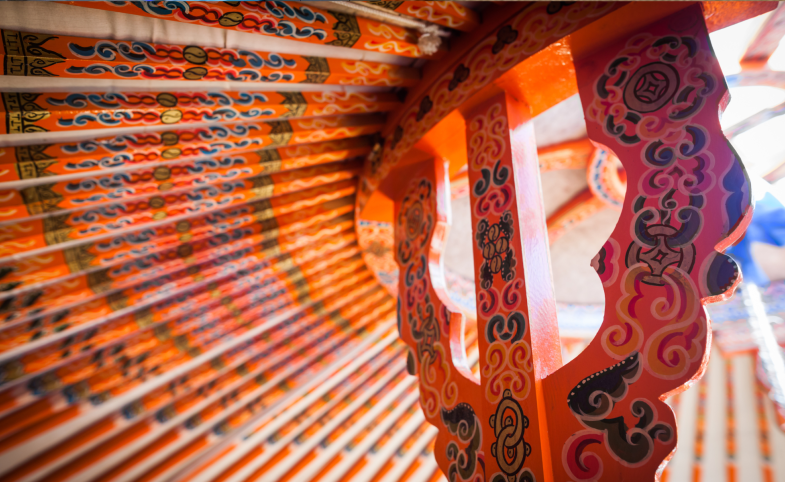Mongolia’s foreign policy has historically been shaped by the influence of its two large neighbors, the Russian Federation and the People's Republic of China. After Mongolia adopted a democratic system in 1989, its foreign...
KEEP READINGThe CPD Blog is intended to stimulate dialog among scholars and practitioners from around the world in the public diplomacy sphere. The opinions represented here are the authors' own and do not necessarily reflect CPD's views. For blogger guidelines, click here.

What Mongolia Can Learn from U.S. Exchange Programs
Launched in 1948, Fulbright’s Student Program has become a popular initiative for those seeking postgraduate education. Due to an ever-rising number of applications, the U.S., in cooperation with the government of Mongolia, recently increased the number of grantees to 25 each year.
Many Fulbright alumni from Mongolia who earned education in the U.S. have demonstrated leadership and success in their respective sectors. Mongolia’s current Prime Minister L. Oyun-Erdene, and former President (2009-2017) Tsakhiagiin Elbegdorj, both went to Harvard. Other notable alumni include current and former ministers and parliament members, such as Minister of Culture Ch. Nomin, and Parliament Members Kh. Bulgantuya and B. Munkhsoyol.
Investing in people-to-people exchange is a powerful tool for creating long-lasting impact and influencing perceptions of foreign publics. In particular, cultural and educational exchange programs have been proven to show numerous advantages for both receiving and host countries. These exchanges can deepen mutual understanding; promote each country’s values; as well as prepare leaders who can spread their acquired knowledge to their local communities.
I was a junior in undergraduate school when I first came to the U.S. through an exchange program called the SUSI Student Leaders on Women’s Leadership Program. I then decided to return to the U.S. for higher education because I saw so much value in the program, including the opportunity to study in an interactive environment and experience a big campus.
Moreover, I had the privilege to work as an intern, then land jobs at public diplomacy-focused nongovernmental organizations, where I earned practical skills and knowledge pertaining to how an international exchange program is implemented behind-the-scenes.
Cultural and educational exchange programs can deepen mutual understanding; promote each country’s values; as well as prepare leaders who can spread their acquired knowledge to their local communities.
I took away a few key lessons from those organizations:
1) It takes a big community. Exchange programs require many levels of logistics, excellent planning, and good execution by many. It is near impossible for a single organization to pull off a successful exchange program. From orientation, venues, overseeing budget, cultural activities, interpretations, printed materials, domestic flights, and homestays, there are many parts to the whole, with each activity requiring a unique skillset and careful planning.
2) Passionate staff. I was impressed by the passion and work-ethic of the officers and associates who implement exchange programs. From the state foreign officers, to the national program agencies, to the community-based members’ staff, all were enthusiastic about their job, recognizing that what they do makes an enormous impact for exchange program participants.
3) Engaging and growing alumni networks. Once exchange participants return to their home countries, engagement and communication must not end. In fact, it should be only the beginning. Participants leave the U.S. with an abundance of valuable information, resources, networks, and other opportunities, including grants, allowing them to share what they learned with their own communities. That is the beauty of an exchange program, I have learned.
The U.S. is a leading example when it comes to international exchange programs. As of today, over two million alumni have attended U.S.-funded ECA programs. The U.S. allocates millions of dollars each year to fund all those educational and cultural (ECA) programs through the Bureau of Educational and Cultural Affairs. In 2022, overall spending on public diplomacy was $2.4 billion, including the ECA programs. This figure encompasses the budget for maintaining American Spaces all across the world, websites, funding projects for alumni, and many more.
A country like Mongolia, which sends its most promising leaders, would be wise to learn from America’s exchange program practices. Perhaps, similar to the U.S., Mongolia could begin allocating funding for people-to-people programs as part of its soft power and public diplomacy efforts. Building a community network such as Global Ties U.S. could be a great next step, followed by agreements with countries whose participants Mongolia would welcome.
Visit CPD's Online Library
Explore CPD's vast online database featuring the latest books, articles, speeches and information on international organizations dedicated to public diplomacy.
POPULAR ARTICLES
-
January 2
-
December 15
-
December 17
-
November 25
-
January 2
Join the Conversation
Interested in contributing to the CPD Blog? We welcome your posts. Read our guidelines and find out how you can submit blogs and photo essays >.













